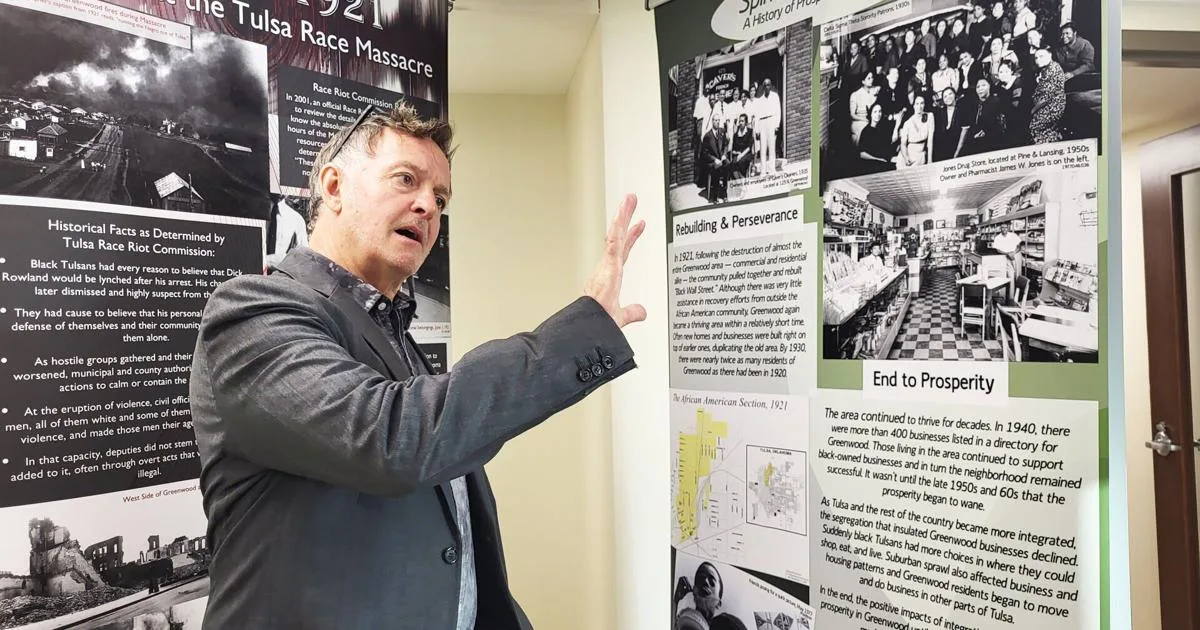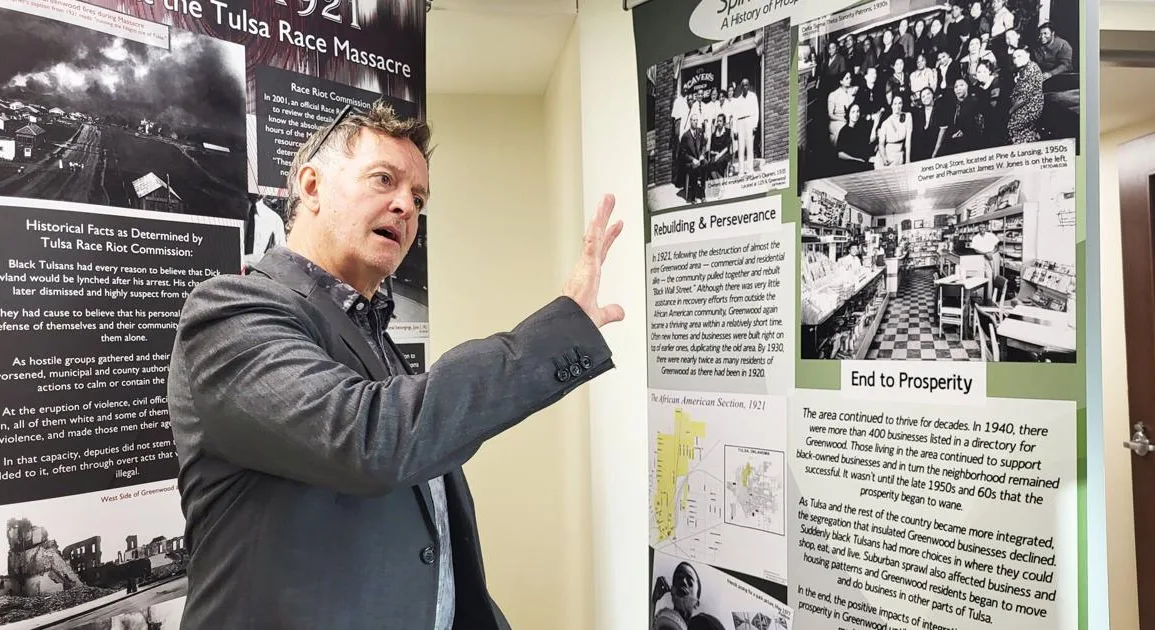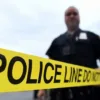
A display from Tulsa Historical Society of the 1921 Tulsa Race Massacre is on loan to the Northeastern State University History Department, and an assistant professor of history is passionate about ensuring as many people as possible learn about the horrific event.
The massacre happened in the community of Greenwood, and Kasey Rhone, former director of diversity and inclusion programs at NSU, has taken a position as director of education at the historical society.
“This is a huge plus for us as a history department in terms of connections for internship and sharing of resources,” said Professor David Corcoran.
Four panels are on display in NSU’s Wilson Hall. The exhibit places the massacre into a much broader historical context.
It is unusual for a museum to be willing to share outright what it has, said Corcoran.
“One of the issues in the teaching of African American history is we tend to only focus on slavery, on the horrors of discrimination and treatment,” said Corcoran. “The reality is we also look at a place like Greenwood, and there is a very broad history of community and of people and achievement. That’s what I like about this display, is it shows that complexity.”
Many of the themes of violence and discrimination at that moment in the massacre run through the broader history of Greenwood, but the event is only a portion of the story, said Corcoran.
Greenwood was a prosperous African American community, and after the horror of the massacre, the community rebuilt, Corcoran said. By the 1930s and 1940s, the community was again thriving.
“It’s pretty impressive what it comes back to,” said Corcoran. “But what happens in the 1960s is a push for urban renewal and in the case of Tulsa; that meant a highway was put through [Greenwood].”
Suddenly, the community was not able to thrive as it once did because of the highway that divided the community, said Corcoran.
“If you visit Greenwood today, you see that Tulsa [has installed] a walk with panels that actually tells that story of how it divided the community,” Corcoran said.
That wasn’t unique to Tulsa, he added.
“You can go from place to place in this country, and urban renewal projects targeted black communities,” Corcoran said.
The exhibit tells the full story, and not just the horrific moment in time, said Cowwrcoran. He said the people rounded up and blamed for the massacre were African Americans, and that’s why for years, it was called the riot.
“It’s about a community that has perseverance and rises back up,” Corcoran said.
There is a suite in the department where the panels can be set up for special events, and they can also be pulled into classrooms.
“On Aug. 28, we had 50 plus students and faculty that showed up for a late afternoon reception,” said Corcoran. “We have a brand-new public history program certificate that we are now offering in the history department, [for] people who want to work in cultural institutes and museums and libraries and archives. Students are using these panels and looking at the way an exhibit is put together.”
It’s not just what went on in Tulsa, Corcoran said.
“This very campus has its own issues that go back to dealing with race,” he said.
The Cherokees who were slaveowners brought their slaves with them in the removal, he said.
“It’s a really powerful topic and we are encouraging people to come and see [the exhibit] and the public is welcome,” Corcoran said.
He wants to be engaged in the compelling issues of the times.
“We are historians, and our focus is the past, but the focus on the past is foolish if there’s also not a look toward the present,” said Corcoran. “We want to also represent who we are as a community.”
Corcoran said it is easy to avoid topics like the race massacre.
“It’s a tense moment right now in terms of state curriculum, particularly history,” Corcoran said. “Teachers, quite frankly, feel under attack, and concerned about what they can and can’t teach in the classroom.”
From Corcoran’s viewpoint, the notion that topics would be avoided has been the problem in the past.
“We can’t go forward until we address the issues of the past,” he said. “The Tulsa Race Massacre is part of the state’s standards, in terms of social studies. But you can’t just talk about something in isolation. You need to talk about the broader issues.”
Dealing with those compelling issues requires educators to look fully at the context of events.
“If you look around the country at issues of violence and discrimination, if you look at the criminal justice system, and the people that are targeted more by that system, I think [this kind of thing] is happening in a different way, but it’s part of the same issue,” Corcoran said.
He teaches history during the periods before and after the Civil War.
“I think there is a cliche that [we are repeating history], but there’s a truth to that. The truth is we are never going to repeat the actual event, but the themes remain the same,” he said.
Corcoran said the right to vote was first extended to African American men in 1870, but not women, because women of any race did not have that right.
“That right is denied wholesale [in present times] in certain parts of this country,” Corcoran said. “We have legal rights on paper, but there are real issues in terms of voting rights in this country.”
If representative democracy is to be believed, it’s best that as many people vote as possible.
“And Oklahoma, frankly, has one of the lowest voter participation rates in the country,” said Corcoran.



